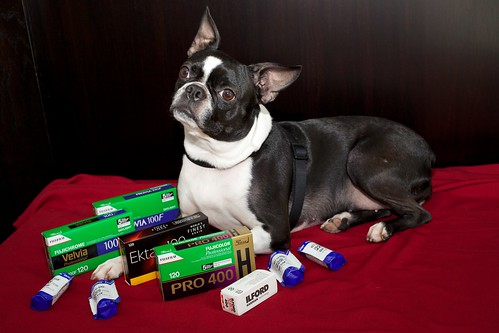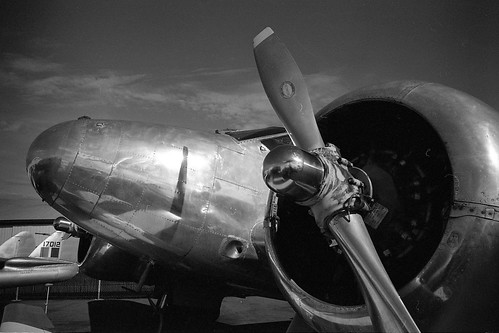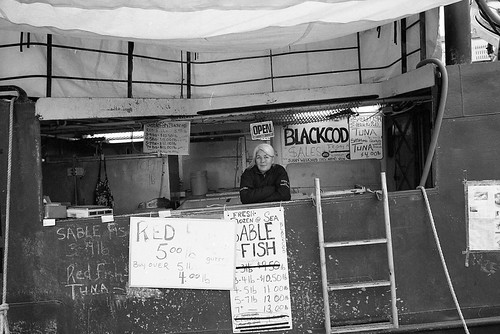Jay from The Slanted Lens on YouTube visits Richard Photolab, a photo processing lab in Valencia, CA to give us an overview on how film processing and scanning is done:
Tag: film
Reflex, a new 35mm film camera design
Petapixel had the news about Reflex, a new 35mm film camera design:
The Reflex combines old, time-tested designs with exciting new ideas to create a brand new concept of what a manual film SLR can be for the modern generation of photographers.
Head over to the kickstarter page that explain it in more details. Here is the summary:
- Modern mechanical and electronic components.
- Interchangeable mount, by default with a M42 threaded mount, but optionally K, Nikon F, Canon FD, etc.
- Interchangeable back: 35mm film magazine.
- Built-in Flash and continuous LED light.
- Modular, “open-source” and connectivity (like Bluetooth Low Energy). The intent being to have open specifications for third-parties to provide accessories.
- Battery with USB charger.
Still at the Kickstarter level, already past half of its funding as I write this, on the first day, Reflex plans to ship in September 2018 with the specifications still subject to change. The pledge that gives the camera body in its barest configuration as a reward is at £350 (~CA$590). You get the M42 mount, no lens. I believe this is reasonably priced.
My thoughts:
It is good to see that there are some people interested in make film cameras, beyond the booming instant photography. Yes there is Japan Camera Hunter’s project of 35mm compact camera project but it seems to be just a project.
The supply in used film camera is nice, with quite many affordable units, but it won’t be eternal. Something fresh is definitely needed for the survival of film photography.
The design is also interesting. It doesn’t try to be too complicated or gimmicky, the two major innovations are the interchangeable lens mounts and the removable film back. The former is a dedication to reusing older lens, without having extra adapters, and the later solve one of the issue of film that we can’t change film type without finishing a roll (or hacking by rewinding the spool, been there, done that). Some would argue that the flash or continuous LED light are gimmicky, but the Bluetooth Low Energy part is interesting. I like geotagging and this seems to be the perfect fit. It would be terrific if we could get the exposure information and DX that way as well.
And with all the comments, Shootfilm has an opinion on the matter.
The Elephant in the digital darkroom
The Elephant in the digital darkroom talks about how Film is coming back to Hollywood:
It’s an inexpensive archiving system, a highly effective means of preserving the motion picture heritage. Archived 35mm film stock remains stable for centuries under proper climactic conditions. With digital, however, the film industry is discovering that its core assets, its digital motion picture masters, aren’t as permanent as the film stock they’ve replaced.
I have always thought the same about still images, that under the guise of looking more convenient, that digital wasn’t as good as an archival medium.
What about the shoe boxes with pictures from your family members?
What about those lost rolls from unknown artists that happen to be an historic treasure depicting everyday life, like for example: Vivian Maier ?
This is the digital conundrum: we shorted the photographic workflow, we make it “easier” for the photographer, we make sharing more pervasive, but we also made the archival life shorter. Between the cloud services that disappear, recordable CD/DVD that disintegrate over the years, the hard drives that crash, the stolen phones, there is a lot of uncertainty whether your photos are safe or not and whether future generation will see them or not.
I wish good luck to the archivists of our future.
Digitizing negatives
David Lam show us his rig for digitizing negative using a digital camera (dead link) and explain the rational behind his choices.
Back in June, Petapixel had an article about DIY film scanning with LEGO and an iPhone, an interesting alternative approach.
At a time where film scanners are mostly things of the past – where the new models are a niche segment in which flatbed scanners reach the quality that the traditional film scanner used to have, where the old models are abandoned by their vendor whose software was so mediocre that it doesn’t run on modern PCs and where the high quality machines are so expensive, it feels like the best way is to actually use these digitizing devices called digital camera that are quite common. Everything is in the setup.
Fujifilm film price increase
Bad news, Fujifilm Announces Big Worldwide Price Hike on Film according to PetaPixel:
This latest price hike will hit your wallet pretty hard — hence the dedicated announcement.
“The price increases are substantial and it would be an increase of at least double digit, but will vary depending on products, markets and regions” Fuji says. You can expect to see the price tags change starting this month.
An increase of about 10% in the us (archived link) according to Fujifilm USA.
Some people suggested to buy anything but Fujifilm. If only they were not the only one in some market segments.
X-Ray and film
Bokeh talks about the damage of X-Ray on film with a complete practical illustration: where, how many time, which film, and the actual images. Just an example of what can happen.
Just read.
Personally I just avoid as much as I can traveling with film.
Overexposing colour negative
Petapixel has Daniel Lachman tell us how much you can over expose colour negative film:
“What I took away from this is that film basically can’t be overexposed, it can just be too dense for the scanner to be able to shoot through the negative. But the information will always be there.”
My quick take is that you can shoot it at +2 and it will be more tolerant to under exposure error.
EPSON launches new photo film scanner
EPSON launches benchmark flatbed film and photo scanners.
This to replace the top V700/V750 scanners. It is good to see that EPSON continues to invest in that field. Now we shall see if the quality on small medium like 35mm film is up to the expectations, but it is not like there is plenty of choice since Nikon bricked their expensive CoolScan by abandoning the low quality software that came with it – low quality because it didn’t run on more modern OS, at least on MacOS.
Time will tell.
Goodbye Kodak BW 400CN
Kodak Alaris is discontinuing the BW 400CN.
A very nice film meant to shoot Black & White and have it processed in a regular one hour minilab as it is a C-41 process film.
Now that one hour minilabs are an endangered specie and that it is much easier to find Black & White chemistry than C-41, it was bound to happen. Not sure exactly what to replace it with.
Here are some samples I shot a few years ago:
Kodak to sell film and imaging division…
Kodak announced the plan to sell the film and imaging division to the UK Kodak Pension Plan in a move to settled debt and going toward exiting chapter 11
The question is whether the pension plan will deal with this asset as the film business or just as financial value? One would think the Kodak Pension Plan knows about Kodak business at its heart…
Time will tell, and I want to be hopeful.



